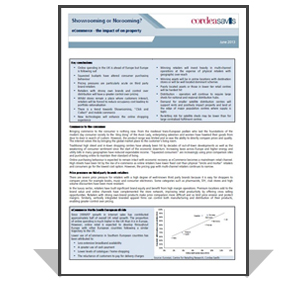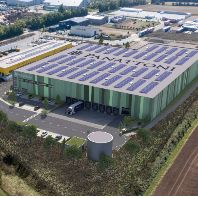Showrooming or Norooming? eCommerce – the impact of on property June 2013 | Cordea Savills

Online purchasing behavior is expected to remain intact with economic recovery as eCommerce becomes a mainstream retail channel. High streets have been hit by the rise of e-commerce as online retailers have lower fixed cost than physical “bricks and mortar” retailers and consumers go for the lowest cost option. However, the pricing gap with multi-channel retailers continues to narrow.
KEY FINDINGS
• Online spending in the UK is ahead of Europe but Europe is following suit
• Squeezed budgets have altered consumer purchasing behavior
• Pricing pressures are particularly acute on third party brand retailers
• Retailers with strong own brands and control over distribution will have a greater control over pricing
• While stores remain a place where customers interact, retailers will be forced to reduce occupancy cost leading to portfolio rationalization
• There is a trend towards Showrooming, “Click and Collect” and mobile commerce
• New technologies will enhance the online shopping experience
• Winning retailers will invest heavily in multi-channel operations at the expense of physical retailers with geographic over-reach
• Winning assets will be in prime locations with destination stores or will be well located dominant schemes
• Poorly located assets or those in lower tier retail centers will be hardest hit
• Distribution - operators will continue to require large sheds for national and regional distribution hubs.
• Demand for smaller satellite distribution centers will support rents and positively impact property and land at the edge of major population centers where supply is tight.
• Re-letting risk for satellite sheds may be lower than for large centralized fulfillment centers.
(This article features excerpts from the full report – please download it here)





